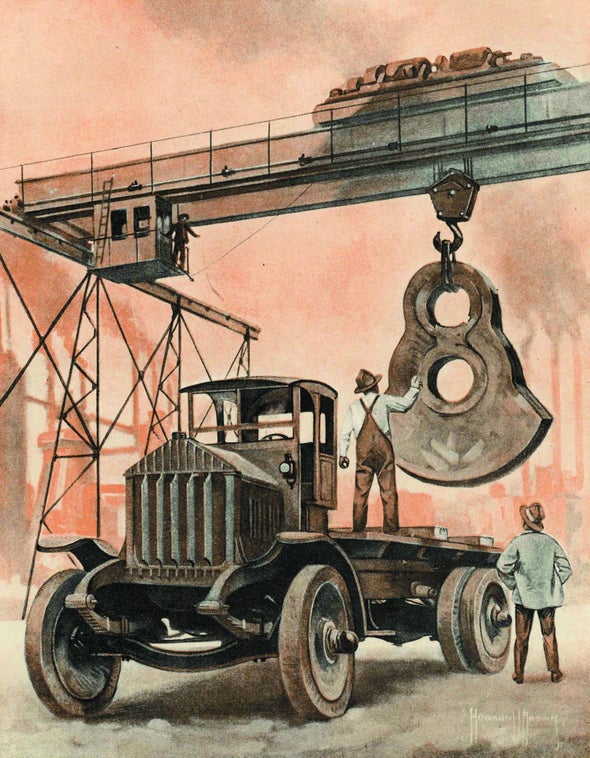1971
Antievolution Evolves
“In recent months the teaching of evolution has come under attack in a number of states. The revival of fundamentalism in biology takes a somewhat new form: the emphasis is on opposition to current theories of the origin of life and the diversity of species not by theologians but by scientists. The movement is led by the Creation Research Society, whose members have appeared before state boards of education and textbook committees in California, Texas, Arkansas and Tennessee. The society's credo says that it is ‘committed to full belief in the Biblical record of creation and early history’ and that its goal is ‘the realignment of science based on theistic creation concepts.’”
Joy of Pulsars
“The origin of the energy input to the Crab Nebula had been a puzzle that had long defied attempts at solution. Among the various possibilities considered, John Archibald Wheeler at Princeton in 1966 and Franco Pacini at Cornell in 1967 had independently put forward the apparently far-fetched idea that a rotating neutron star might be the energy source. Now, after the fact, it is possible to use the observations of the Crab Nebula and its pulsar (NP0531) to invert the problem and show that if the pulsar is a rotating star, it must have the mass and radius of a neutron star. In other words, even without the theory developed over the past 40 years, it is possible to assert that stars of approximately one solar mass and radii on the order of 10 kilometers must exist since the pulsar in the Crab Nebula is such a star. —Jeremiah P. Ostriker”
1921
Truck Transport
“This is the era of the motor truck. Yesterday it was the railroad; before that it was the stage coach; and still further back it was the canal. The motor truck, and by that we mean modern highway transportation, has come into its own. It has defined its field of service and established itself therein. In the field of short-haul transportation, the motor truck is the last word in efficiency. The use of the motor truck, both in the handling of passengers and freight, is entirely an economic proposition for the benefit, according to the leading motor truck authorities, of the country at large. If that is so, there is no justification for limiting by legislation the use of the highway by that vehicle.”
Connecting Coast to Coast
“The Longest Land Line in the United States was recently opened to the public by the Western Union Telegraph Company, giving direct communication between New York and Seattle. Four messages simultaneously each way can be sent over the single copper strand.”
1871
Thomas Henry Huxley
“Although Dr. Huxley is profoundly learned in natural history, he has also found time for general literary culture, and is fond of poetry, fiction, and fine writing. It is this wide culture that gives him such power in his controversial writings. He seems to like nothing better than a regular set-to with some members of the old-school scientists, and he has sometimes been accused of exhibiting a pugnacious and acrimonious spirit. On one occasion Samuel Wilberforce, Bishop of Oxford, blandly asked him in the presence of a large audience: ‘Is the learned gentleman really willing to have it go forth to the world that he believes himself to be descended from a monkey?’ Professor Huxley rose and replied in his quiet manner, ‘Whether I should be descended from a respectable monkey, or from a bishop of the English church, who can put his brains to no better use than to ridicule science and misrepresent its cultivators, I would certainly choose the monkey!’”
Camels in Nevada
“On a ranch on the Carson river is to be seen a herd of twenty-six camels, all but two of which were born and raised in this State. The camel may now be said to be acclimated to Nevada. The ranch upon which they are kept is sandy and sterile in the extreme, yet the animals feast and grow fat on such prickly shrubs and bitter weeds as no other animal would touch. When left to themselves, their great delight, after filling themselves with the coarse herbage of the desert, is to lie and roll in the hot sand. They are used in packing salt to the mills on the river, from the marshes lying in the deserts, some sixty miles to the eastward. Some of the animals easily pack 1,100 pounds.”



